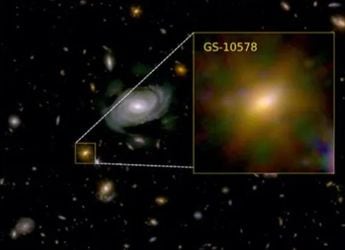- Home
- Science
- Science News
- Solar Storm: NASA Warns of Disturbance Likely Due to 'Swirling Sun Debris' Heading Towards Earth
Solar Storm: NASA Warns of Disturbance Likely Due to 'Swirling Sun Debris' Heading Towards Earth
Solar storms or CMEs are not a new phenomenon and they occur from time to time.

Photo Credit: Unsplash/ NASA
The coronal mass ejection is belived to have escaped the Sun earlier this to week
NASA has warned about the potential impacts of “swirling Sun debris" created by a solar storm likely to hit the Earth by December 11. The agency said a coronal mass ejection (CME) of plasma and magnetic field escaped the Sun earlier this week and is expected to possibly strike by Saturday. Astronomers and space scientists say the NASA warning suggests the recent filament eruption is likely to give a “glancing blow” to the south of Earth. There is likely to be a mild disturbance to radio and GPS services but the aurora, a natural light display in Earth's sky, will possibly be visible in high altitude regions.
Solar storms or CMEs are not a new phenomenon and they occur from time to time. When the Sun releases energy (plasma), it is accompanied by the magnetic field from its corona. They escape the Sun and travel with the solar wind, which takes it to other parts of the solar system. The US Space Weather Prediction Centre says CMEs can escape the Sun at breakneck speeds and reach the Earth in as little as 15-18 hours. But NASA has said the recent CME was cast towards the Earth on Monday. That it will reach our planet by Saturday suggests it is not one of the fastest moving CMEs. However, astronomers say the “swirling debris” caused by the explosion in the Sun will barely miss the Earth. They expect the debris to fly just south of the planet and are unlikely to create any geometric storms. However, auroras could be seen around the poles.
Dr Tamitha Skov, a space weather physicist, told the Express that this CME could cause mild disruption to the southern part of Earth. “NASA predictions show a recent filament eruption looks to deliver a glancing blow to the south of Earth by late December 11. Expect a mild disturbance, but the aurora is possible at high latitudes with sporadic amateur radio and GPS issues on Earth's nightside,” Skov said.
Catch the latest from the Consumer Electronics Show on Gadgets 360, at our CES 2026 hub.
Related Stories
- Samsung Galaxy Unpacked 2025
- ChatGPT
- Redmi Note 14 Pro+
- iPhone 16
- Apple Vision Pro
- Oneplus 12
- OnePlus Nord CE 3 Lite 5G
- iPhone 13
- Xiaomi 14 Pro
- Oppo Find N3
- Tecno Spark Go (2023)
- Realme V30
- Best Phones Under 25000
- Samsung Galaxy S24 Series
- Cryptocurrency
- iQoo 12
- Samsung Galaxy S24 Ultra
- Giottus
- Samsung Galaxy Z Flip 5
- Apple 'Scary Fast'
- Housefull 5
- GoPro Hero 12 Black Review
- Invincible Season 2
- JioGlass
- HD Ready TV
- Laptop Under 50000
- Smartwatch Under 10000
- Latest Mobile Phones
- Compare Phones
- Samsung Galaxy A07 5G
- Vivo Y500i
- OnePlus Turbo 6V
- OnePlus Turbo 6
- Itel Zeno 20 Max
- OPPO Reno 15 Pro Mini 5G
- Poco M8 Pro 5G
- Motorola Signature
- Lenovo Yoga Slim 7x (2025)
- Lenovo Yoga Slim 7a
- Realme Pad 3
- OPPO Pad Air 5
- Garmin Quatix 8 Pro
- NoiseFit Pro 6R
- Haier H5E Series
- Acerpure Nitro Z Series 100-inch QLED TV
- Asus ROG Ally
- Nintendo Switch Lite
- Haier 1.6 Ton 5 Star Inverter Split AC (HSU19G-MZAID5BN-INV)
- Haier 1.6 Ton 5 Star Inverter Split AC (HSU19G-MZAIM5BN-INV)

















